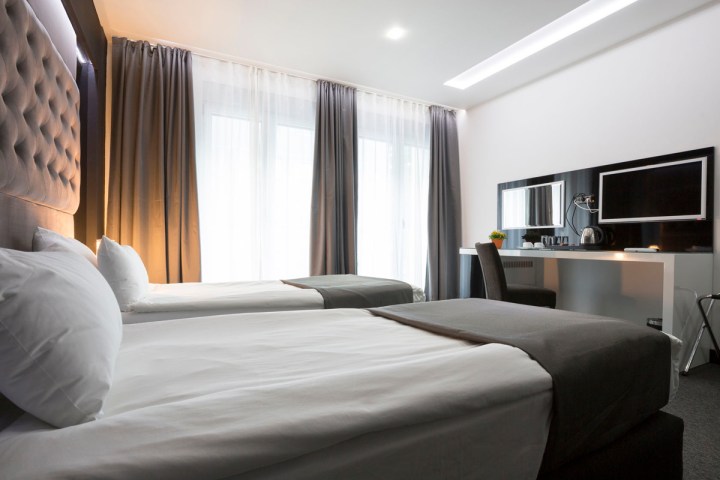
Despite the potential for enraging hotel-goers everywhere, many hotels (including Hilton) think this heavy-handed control actually benefits guests. Because who doesn’t like waking up in the middle of the night either shivering or drenched in sweat?
This increase in hotel-controlled thermostats stems from the installation of energy-efficient, motion-detecting systems, which are replacing older mechanical thermostats. Whereas guests could previously physically turn on the air conditioning or heating unit, the current wave of advanced thermostat technology integrates the system completely into the infrastructure of the room itself.
Because of this, the act of using a touchscreen thermostat to change the temperature of a room is often just for show — little to no change actually occurs.
“When it comes to thermostats, the world has evolved,” Hilton’s vice president of operations Randy Gaines told WSJ. “We’re getting far fewer complaints than we used to years ago.”
In theory, Hilton’s focus on passive temperature controls benefits the chain’s guests more than granting them complete control over a room’s thermostat. Restricting a guest’s access to the thermostat also decreases costs associated with hotel maintenance while avoiding a potential disaster if an air conditioning condenser freezes.
Though many may see Hilton’s climate control as a detriment to their hotel experience, the chain isn’t using this power to intentionally make its guests uncomfortable. According to the WSJ, the New York Hilton leans on a thermostat system which keeps unoccupied rooms at around 78 degrees in summer before automatically activating the air conditioning the moment a guest checks in.
The goal is to keep the rooms at a more reasonable 74 degrees by the time the guest opens the door, which takes roughly five minutes. Hilton’s new temperature system allowed it to reduce its energy usage by 14 percent over the past eight years.

Despite the apparently well-meaning efforts of companies like Hilton, many guests still prefer to have control over the thermostat. This desire has seen the creation of many “how-to” pieces geared at supplying travelers with methods for overriding a room’s temperature control. Be it a dedicated Tumblr account or a simple forum discussion on one of Disney’s hotel pages, there’s a wide-range of available workarounds.
However, hotels are catching on and are installing blocks of override commands. In rare cases, the hotels are “getting better at programming the devices,” according to the WSJ’s report.
As thermostats grow smarter and hotels further refine their operation, the rigging of room temperatures will likely persist. The WSJ shows that to some hotels’ credit, bad reviews left on sites like Expedia or TripAdvisor were directly responded to by the hotel itself, with a proposed solution in tow.
Hotels aren’t in the business of ticking off guests. If thermostat-gate becomes an epidemic without treatment, it will be the hotels themselves that chose to cannibalize their own industry, which would be an egregious error given the availability of such alternatives as Airbnb or VRBO.
Editors' Recommendations
- How to use your smart thermostat when you’re away for the holidays
- You’re not paranoid: Apps are tracking your location 24/7 and it’s totally legal
- Verizon’s 5G is blazing fast on the Galaxy S10 5G, if you’re on the right block


